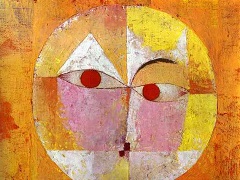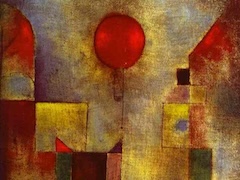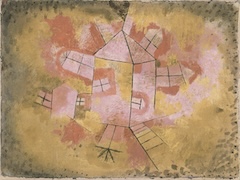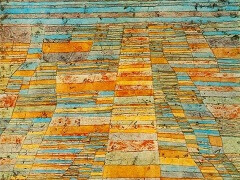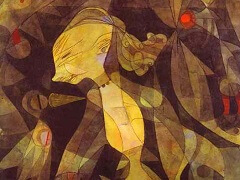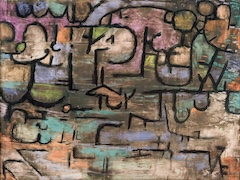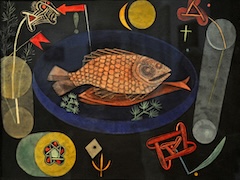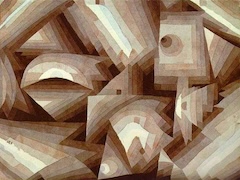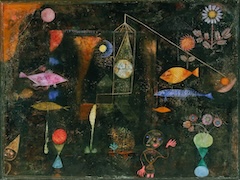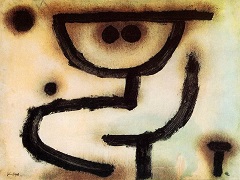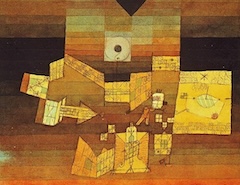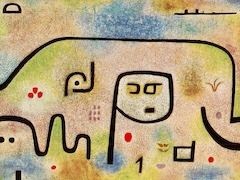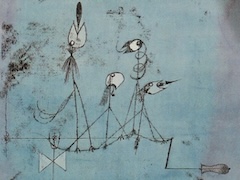Brother and Sister, 1930 by Paul Klee

For a good part of the later 20th century, painters, maybe even whole movements (remember those) "borrowed" from Klee or were influenced by him or, as with the artists who came out of the Bauhaus, were taught by him.
Artists from the Dadaists to the Surrealists to even the grand trickster himself, Duchamp admired his "extreme fecundity." His symbols and graphic line were copied by the Surrealists, especially Max Ernst and Andre Masson, and evolved into what they called "automatism." His striped landscapes and magic-square paintings inspired Malevich and Constructivism. Joan Miro borrowed his walking line: "The line likes to go for a walk," - Klee's remark.
His early shows in America had a tremendous impact on local artists. His paintings, with their emphatic signs, such as Brother and Sister, 1930, meant a great deal to American modernists like Jackson Pollock.
Klee was also a poet, a philosopher, a naturalist. The titles he gave his paintings are small metaphorical poems. Their suggestive power enhances his themes, sometimes with sparkling wit and sometimes in such a way to suggest, even mask the meaning and intrigue the careful viewer. An excellent musician, his works also suggest visual music, a man with a sixth sense who is composing his pieces as carefully as any composer.
All in all, a tremendous amount of Klee's work and teach influenced and enriched the development of modern art, not only from the paintings themselves but also from his teaching theories, in which he obsessed about that most mysterious of subjects, creativity itself.

